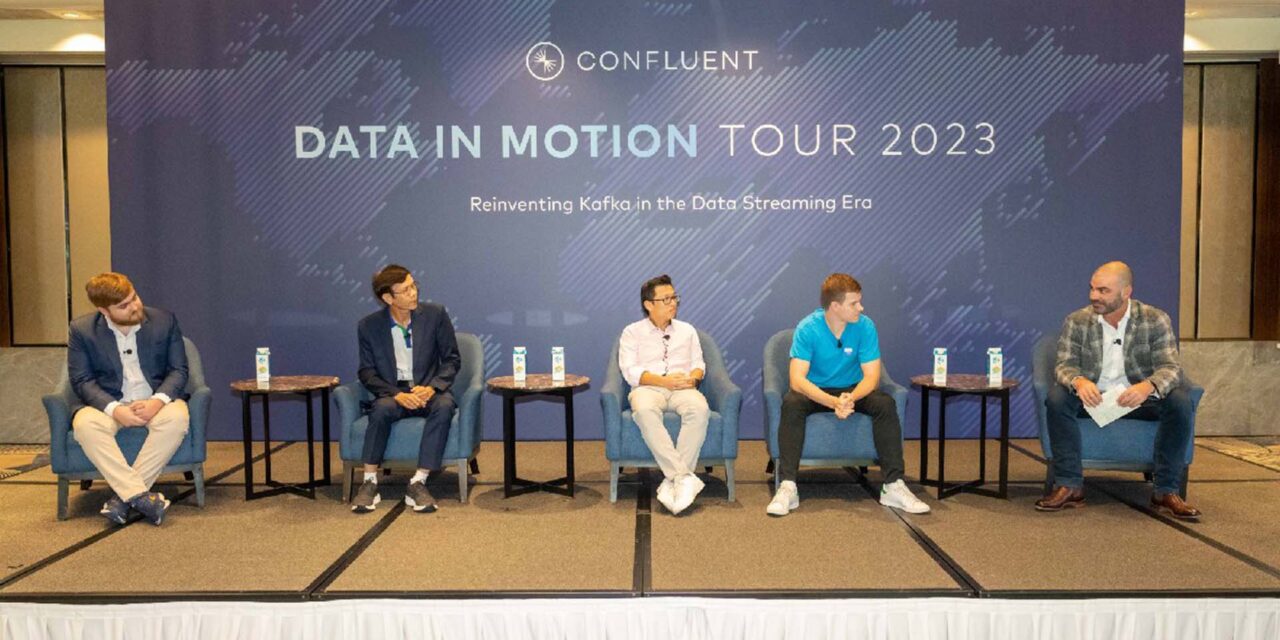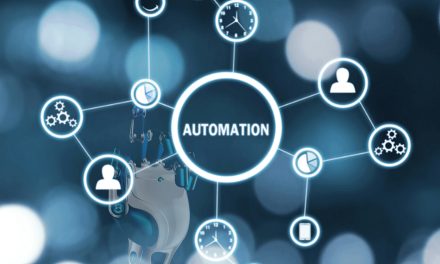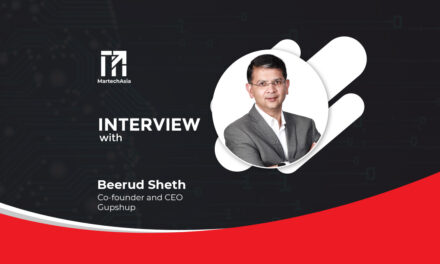Data streaming today offers a viable way for brands to gather real intelligence and be responsive to customer needs and business opportunities. Data streaming can also drive marketing automation and be a distinguishing feature as more companies digitalize their operations. To learn more, speakers across different industries gather at a panel to discuss the challenges they face and the benefits real-time data streaming and analytics in their fields.
With increasing digitalization and an ever-growing abundance of data, organizations in APAC can leverage the opportunities in data steaming and analytics to improve the user experience and enable better customer retention.
Globally, the streaming analytics market is on the ascendancy – it is expected to grow at a compound annual growth rate of 32.6% annually and reach US$38.5 billion by 2026 with Asia Pacific being the fastest growing, according to research by Mordor Intelligence.
The cloud is the major catalyst of this growth with real-time data synchronization surpassing traditional data processing and accessing methods.
Modern data streaming platforms can automatically process information, integrate data from various sources and help manage and act on the data as they are generated in real time. They can be seen today in applications such as GPS tracking, fraud detection, stock trading, retail inventory management, gaming, ride share apps or social networks.
Platforms like Google, Meta and Amazon, for example, have for years used real-time data streaming to improve their advertising and make recommendations.
The potential and power of data streaming was a key topic of interest at a panel titled Driving Efficiency and Innovation by Delivering Superior Information and Customer Outcomes organized by Confluent recently in Singapore and moderated by Stuart Ward, Financial Services Industry Lead APAC at Confluent.
Confluent is a cloud-native data streaming platform that empowers companies to connect, store, process, govern, and share data throughout their organisation so they can build smart, real-time applications. The company defines streaming data as the continuous flow of data generated by various sources.
From applications, networking devices and server log files, to website activity, banking transactions, and location data, they can all be aggregated to seamlessly gather real-time information and analytics from a single source of truth.
What’s needed to get data streaming right?
By using stream processing technology, data streams are processed, stored, analyzed, and acted upon as it’s generated in real-time.
Key to the success of real-time streaming is the need for data to be accurately interpreted and analyzed from different parts of the business, said Stuart Loxton, Data Lead of Trust Bank, a Singapore digital bank.
“It’s not just about having the data, but how you are able to leverage it and provide a real-time customer experience. That’s core in what we’re doing in our banking system – how we update our customer’s balances, how we onboard them and the notifications that get in real-time when using our app or products. We rely on asynchronous processes, events that are flowing through the ether and driving value in many disparate areas.”
Being in the banking sector, Loxton said the data must be meaningful, consistent and correct to be able to provide the necessary real-time customer experience.
“(We must) get it right, get it performing and ensure data security is core. Once we have the key data, what’s important is also aggregating and enriching it and moving it into our other systems, then provide transaction categorisation or clean up the merchant name, so the customer knows where that transaction actually came from. This is absolutely critical in ensuring a seamless payment experience.
“We also need to do fraud detection as well – understanding whether or not the transaction is safe.”
Similarly, Clovis Warlop, Head of R&D (MarTech), Central Group, said data streaming is an effective tool that can be used to enhance the customer experience. “We want to make sure that when they come to our websites, they can find the product they want quickly. We can start targeting and offer greater personalization so that every time they come back, we know what they want”.
Central Group is a Thailand retail chain with businesses in fashion, property, supply chain and logistics, uses real-time statistics to enable business modelling and develop data-driven marketing strategies. Today, the retail industry is one of the fastest users of streaming analytics tools and services.
What are the challenges we need to overcome?
The pandemic served to kickstart digital transformation, particular amongst government agencies, where there was a “lot of demand for unique services that needed to be launched at scale and at speed”, said Johnson Lam, Managing Director, Accenture Singapore.
A continuous challenge was the integration of legacy infrastructures with the big data that was being collected.
“To start modernising their infrastructure, they need to actually put links between what their legacy system is and what their new capabilities are, and have that synchronisation as part of their modernisation strategy. Some have probably built their systems over a decade, and it’s not possible to carry out a ‘big bang’ exercise to move everything in one shot,” said Lam, adding that the long term focus of the government agencies is to provide instantaneous services to citizens.
For organizations, data consistency and data access remains a constant challenge in data stream processing.
“How can data be used or organised in a timely fashion remains a real challenge. We need to know if the data it correct? Is it immutable? Can it be trusted?,” asked Chalerm Duangyeewa, Senior Vice President at CPF IT Center, an integrated agro-industrial and food business based in Thailand.
Duangyeewa said the development team at CPF IT Center is current decoupling processes across the different business units in countries such as Thailand, Vietnam and Turkey and integrating them.
“We want to be able to integrate these systems with a point to point infrastructure and provide effective support when things change.”data streaming for customer engagement
Duangyeewa said CPF IT Center is now pulling data from the cloud and SAP and running it through Kafka on the Confluent Cloud, which make administrative processes easier for his team to manage.
How can we better leverage the data we collect?
The data collected can also be used to do future customer enablement, said Central Group’s Warlop. “We’re also trying to help the customer better use our systems. For example, we collect data on how long they can use systems etc. and work on how we can improve their experience. We need to stream to be able to activate this.”
By monitoring online search terms, order progress, and promotions over time, the Central Group can track and react to consumer behaviors dynamically and be able to automate marketing campaign triggers.
Warlop said the group’s retail business has now been able to build an entire data enrichment system.
“We have historical profiles of our customers where we look at what did they like when they visit. We take our different data sources and combine it with all historical data that we have on you from different systems.
Once the data is combined, Warlop said they are put onto a new platform that enables the organisation to measure their “propensity to purchase” and to invest in promoting the item to the customer “when we think are close to being purchased.”
“A great example of this is you might one day be shopping for women’s clothes, but the next day you’re shopping for diapers. We don’t want to start targeting women’s clothes if you have a specific journey you’re going for. Even things that may not have seemed relevant end up being relevant most of the time.”
Summarizing the benefits of data streaming, Warlop said: “A lot of what we do is real-time data, when people click, they want to see change, they don’t want the same recommendations. With real-time data, we have the power (of deciding) what will be enabled.”
Suvig Sharma, Area Vice President, ASEAN, Confluent, said a key takeaway from the sharing of experiences by users and organizations from the panel showed that the we can do a lot more beyond collecting and moving data from one point to another.
“Firstly, it’s about enriching data and developing near real-time customer experiences. Secondly, it’s not just enterprises, but public agencies are also focused on creating richer citizen experiences. It was interesting to see how data streaming platforms are now helping to break down silos, enabling access to real-time data and driving innovation.”


















